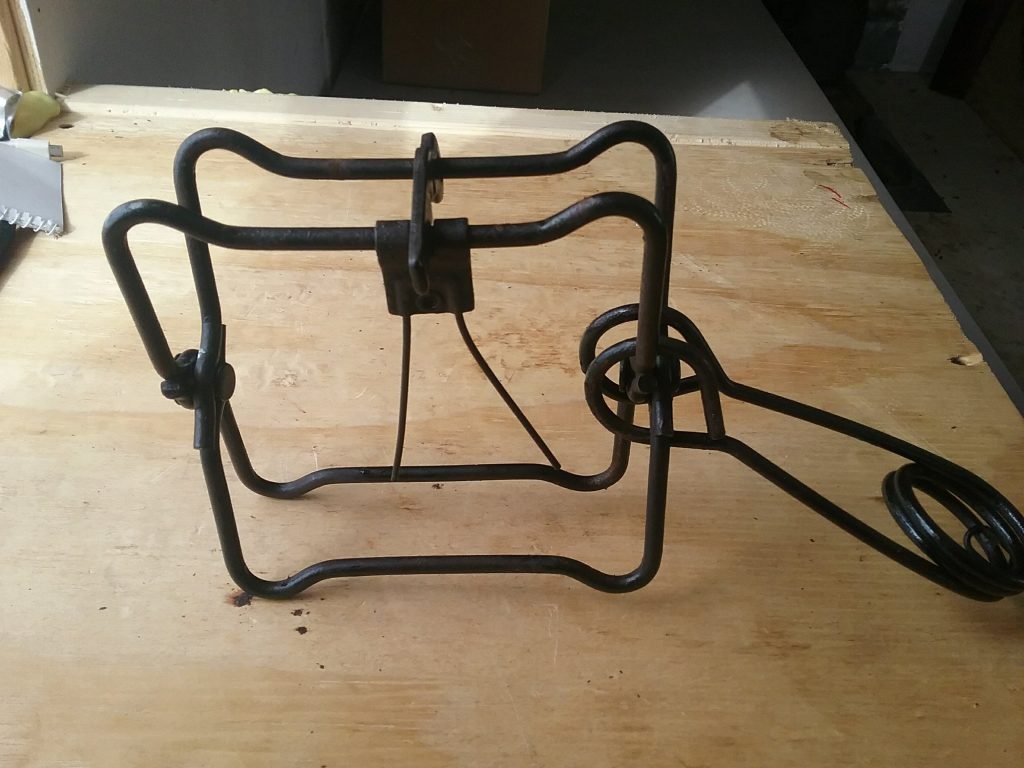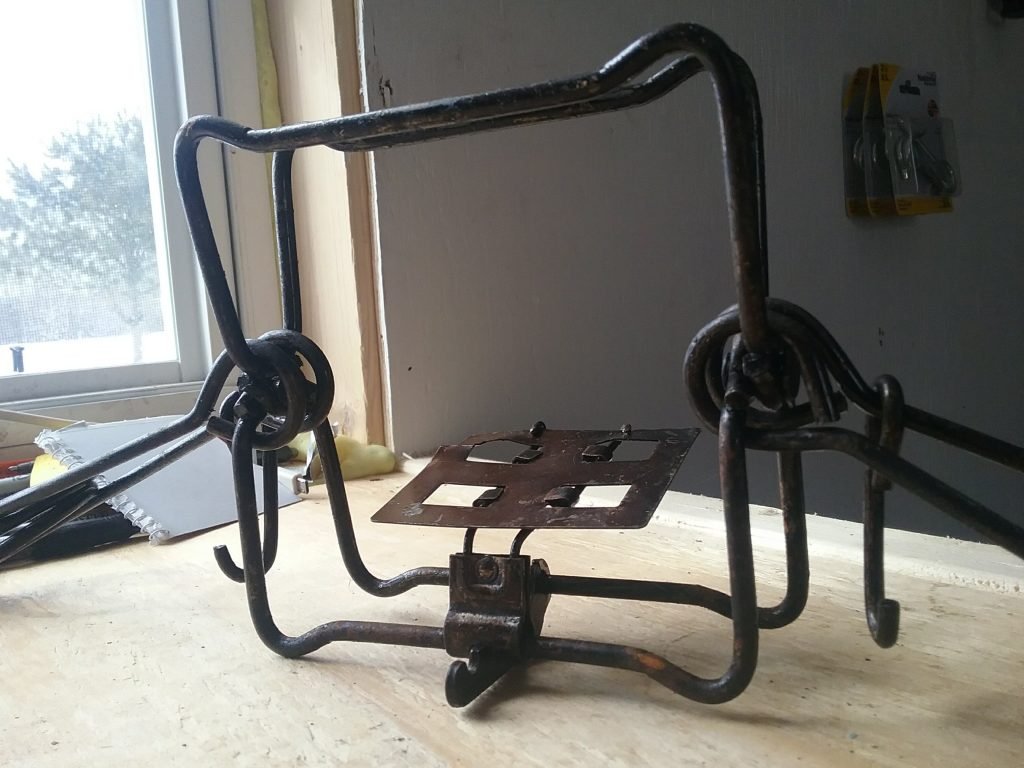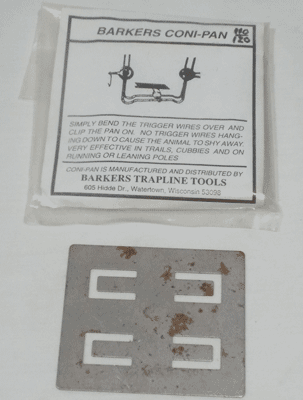This site is supported by you, the reader. If you make a purchase through one of my links, I may earn a small commission. Learn more here.
 Traditional body gripping traps have a two-pronged wire trigger that the animal pushes as it moves through the trap, which causes the jaws to fire and make the catch. But this trigger isn’t always the most ideal, and a number of modifications and improvements have been made over the years for more effective trigger setups in certain situations.
Traditional body gripping traps have a two-pronged wire trigger that the animal pushes as it moves through the trap, which causes the jaws to fire and make the catch. But this trigger isn’t always the most ideal, and a number of modifications and improvements have been made over the years for more effective trigger setups in certain situations.
Don’t get me wrong – in many cases, traditional triggers work just fine. When running blind sets in water trapping, muskrat, otter and beaver seem to push through the trigger wires without hesitation. They are committed to a specific trail, and the wires present less of an obstacle than going around and pushing through, or over/under other objects and terrain. Sometimes I’ll even use specialized circle triggers, which represent a more natural, circular type of opening animals are used to seeing in the wild. Additionally, if a bodygrip trap is partially submerged by water, you can anchor the trap upside-down, such that the dog and much of the trigger are concealed underwater. But for baited land sets, I’ve begun to move away from triggers and more into coni-pans.
 A coni-pan is a flat pan that’s added to a conibear trigger to make it work more like a traditional trap pan. The trigger wires are bent at a little less than a 90 degree angle (toward the center of the jaws when the trap is set), and the pan is clamped onto the trigger wires. The trap is set upside down with the dog underneath the trigger, and adjusted so that the pan sits at a slightly upward-facing angle, with the high side toward the bait.
A coni-pan is a flat pan that’s added to a conibear trigger to make it work more like a traditional trap pan. The trigger wires are bent at a little less than a 90 degree angle (toward the center of the jaws when the trap is set), and the pan is clamped onto the trigger wires. The trap is set upside down with the dog underneath the trigger, and adjusted so that the pan sits at a slightly upward-facing angle, with the high side toward the bait.
Why aren’t traditional triggers always ideal? First and foremost, they require an animal to push the wires, and a small animal going through a trap with relatively high tension on the trigger may not be willing to push hard enough on the wires to set the trap off. It’s not natural to push up against two pieces of metal, and if a critter isn’t really hungry and doesn’t need to get to the bait, it may not push hard against the trigger, and instead back away and move on to a feeding opportunity elsewhere. Second, a small animal like a weasel, mink, or even a marten in a 160 or 220 conibear, can sneak under and around the trigger to get to the bait. No doubt you’ll catch some of these critters, but they will try to avoid brushing up against the trigger if they can, and that can lead to a lot of misses, whether the trap is fired or not. Some folks join the ends of the two trigger wires with a piece of fine wire to try and pick up these smaller sneakers, but it doesn’t always work.

A coni-pan avoids the need to push on trigger wires, and instead provides a platform for animals to step on in order to reach the bait. It also provides a huge opening in between the jaws, and a clear view of the bait. As far at the animal is concerned, there’s nothing keeping them from getting at the bait, and, even better, there’s a nice flat surface to stand on and feed from! Not only do coni-pans seem to encourage more predators to go through the jaws of the trap and access the bait, they seem to be more effective at catching smaller animals that usually sneak around trigger wires. I was amazed at the number of weasels I caught after switching to coni-pans, and was especially surprised at how I picked weasels up in 160’s and 220’s. I always expect to miss any weasel that enters a 160 or 220 set with traditional trigger wires, so I didn’t expect much difference when switching to pans. I also didn’t expect the smaller weasels to be heavy enough to set off the larger pans and their supposed higher pan tension, but I guess I was wrong! The heavier pans on the larger traps seemed to make for pan tension similar to that on the 120’s, and I caught a pile of weasels in these sets.
Most big-number marten and fisher guys in my area have started using coni-pans, and I believe it’s for good reason. They provide a better view of the bait, less resistance and discouragement to an animal working a set, and pick up some of the smaller critters the traditional setup may have otherwise missed.
Not only are coni-pans great for marten and fisher trapping, they work excellent on the mink line, especially in baited pocket sets.
Barker’s Trapline Tools was the originator of the coni-pan (link to Ebay) that’s used by most trappers today. There are also wooden pans on the market, which some trappers feel are more natural, but they are a fair bit more expensive, and I’m not sure they’re necessary. If you’re looking to maximize your chances of success on the trapline, you may want to give coni-pans a try and see how you like them.
Here are a couple of coni-pan options you can check out (links to Ebay):
Leave a Reply